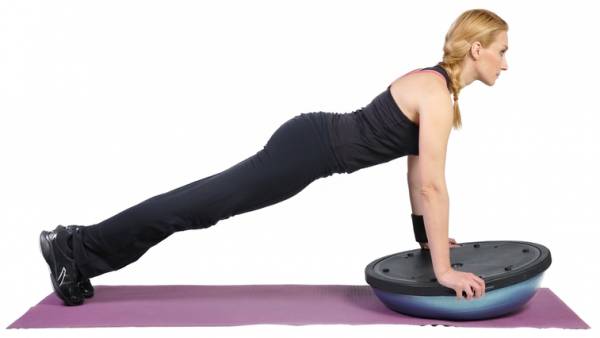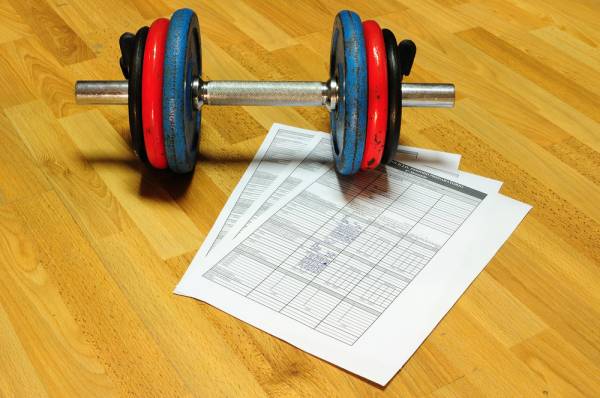This is the final cut-off point for anything still in question when it comes to training methods and their validity, i.e. if you should be bothering to do them or not.
This is the final cut-off point for anything still in question when it comes to training methods and their validity, i.e. if you should be bothering to do them or not.
Time is a valuable commodity when it comes to training athletes. A number of daily and weekly commitments are on an athlete’s plate for training itself. This includes time for becoming stronger, conditioning endeavors, sport-skill replication and refinement, and team strategy sessions.
Not to mention other time-consuming issues such as academic classes and study, part-time employment, team meetings, personal time, meal consumption, and adequate time for sleep. Scheduling anything beyond all that can be a head-scratching.
So when it comes to adding in a training activity, in the name of time-efficiency ask yourself this: is this unproven activity necessary in light of your limited time?
To pass the time-efficiency step, any exercise, drill, method, or scheduled training session must first qualify as a legitimate pursuit.
The previous parts discussed proper component categorization, legitimacy regarding peer-reviewed research, adherence to proven skill specificity acquisition, and the all-important safety aspect.
The final step in evaluating an activity, then, is whether or not it’s worth the effort relative to other daily commitments and its cost-benefit within the often-challenging 24-hour day.
Activities to Use
Any legitimate strength training exercise, conditioning activity, and skill pursuit that is deemed safe and proven-to-work can be implemented. Yes, it all takes valuable time and proper scheduling, but if it can improve performance and minimize injury potential, do it.
Any questionable method, drill, or exercise should be evaluated relative to the time spent on it. Is its purported benefit being addressed by existing scheduled activities or could it be acquired in a more prudent manner?
In example, if a questionable gray-area activity is used to enhance abdominal strength (i.e., a “core stability” exercise performed with a medicine ball), is your existing strength program already addressing that quality?
This simply means if your existing abdominal and low-back protocols are safe and progressive in nature, then you can eliminate the new activity.
In similar context, if a popular (yet unproven) balance and coordination drill is given extensive time to address it (i.e., performing a non-sport-specific squat on a wobble board), would it not be more prudent to perform an exact sport-related balance and coordination event?
An activity that repetitively addresses exact skill execution is all you need.
Can the activity in question be classified as legitimate strength training, conditioning, or skill training? Is it safe? Is it researched-based? If so, it could be a viable option.
However, if the goal of the activity attempted can be addressed by another means within the current program – or could it be gained otherwise in a more prudent manner – avoid that questionable activity for the sake of time and effort.

Lose It
Any exercise, drill, or prescription that is impractical relative to obtaining a measurable benefit should be eliminated.
Likewise, if you’re finding it difficult to schedule it along with other necessary time-consuming training components, expunge it. Knowing you can obtain a benefit by other proven means, don’t add to the list of time-consuming activities.
The Time and Place for Gray-Area Activities
Although many iffy training options can be used safely, but with little measurable benefit for a healthy athlete, there is a time and place when they can be used for special situations – rehabilitation and returning from an injury or illness.
Many of the current tools and devices on the market – medicine balls, wobble boards, Swiss balls, elastic tubing, and slide boards – have a place in the athletic training field. Not for a healthy athlete, but for an injured athlete attempting to regain competition-readiness. Here are some examples:
- An arm that has been immobilized for weeks needs to reverse the process of atrophy.
- A strained muscle that has fully healed now needs to regain full strength.
- Returning from an ankle sprain may require baseline strengthening and basic range of motion exercises.
- Following ACL reconstruction, an athlete may need to relearn how to step up or apply downward ground force in normal daily activities.
- Commencing an exercise program following an eight-week layoff due to a bout with mononucleosis may require a light resistance and moderate exertion plan to slowly progress the athlete back to baseline standards.
The above examples, or any other injury or illness situation, may require you to start from scratch with low-level exercises and drills.
Simply moving the body to slightly elevate the heart rate, moving a limb through a limited range of joint or muscle function against light resistance, relearning general balance and coordination skills, or using bodyweight-only exercises may be the prescription in the transition back to regular training.
The Injection of Fun Into the Training Program
To continue taking steps forward, a lateral step may be required at times. Consistent demanding training can become mentally stressful and physically draining.
A proper balance of work and rest can alleviate this potential problem. However, there may be times when a bit of fun can (and should) be injected into training.
Individual or team competitions can be conducted to make the endeavor challenging and offer some physical benefit. However, use this approach sparingly. And if you’re seeking a mental or physical recovery break due to excessive fatigue, please consider scheduling complete rest days to achieve that goal.

Conclusion
Many new methods and tools have inundated the strength, conditioning, and fitness industry. Some have merit in certain situations (rehabilitation), but much is questionable.
For the sake of time-efficient, practical, and safe training, more research is required to prove their validity, efficacy, and safety.
If you don’t agree with me, then I politely request the following:
- Offer the research that unequivocally proves balancing on an unstable surface – and performing a squat, pressing a dumbbell, throwing a medicine ball or simply holding a static position – improves your ability to perform a specific sport skill.
- Offer the research that unequivocally proves being pulled by an elastic cord or running against its resistance improves your ability to run faster solely by these activities.
- Offer the research that unequivocally proves running through an agility ladder, doing dot drills, or jumping rope enhances footwork that can be transferred to skill executions required in different sports.
- Offer the research that unequivocally proves throwing a weighted object or working against a resistance band improves the ability to throw a dissimilar object (baseball, football, softball, javelin) in athletic competition.
- Offer the research that unequivocally proves doing explosive tossing, triple extending, or rotational drills against a weight stack or with a weighted object improves the ability to execute a different sport skill.
Until more research is conducted, don’t neglect the basics:
- Use safe, practical, and time-efficient strength training.
- Use sensible sport-related conditioning methods.
- Use exact sport-skill practice and dead-on strategic team training sessions.
These will not only be a challenge relative to proper scheduling and program design, but they will also be a challenge in terms of getting athletes to push themselves on a consistent basis.
This is the true task of coaches and trainers.
In case you missed it:
- Training Activities for Athletes: The Logical Steps to Determine Their Value, Part 1
- Training Activities for Athletes: The Logical Steps to Determine Their Value, Part 2
- Training Activities for Athletes: Skill Training Research and How to Apply It, Part 3
- Training Activities for Athletes: Safety and Legitimacy, Part 4
Photos courtesy of Shutterstock.






